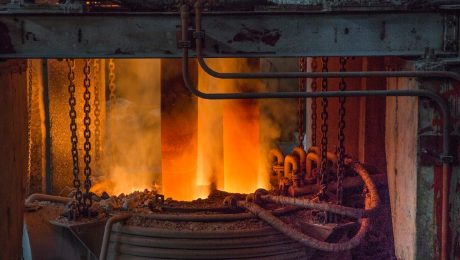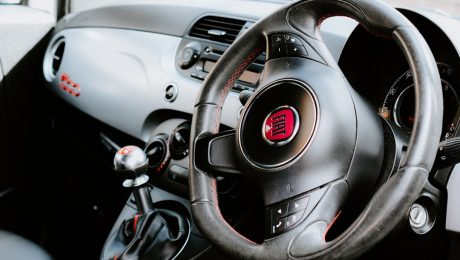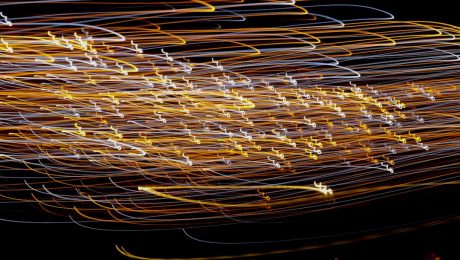The production of high-quality steel is a complex process requiring meticulous attention to detail at every stage. From the initial raw materials to the final product, rigorous quality control methods are essential to ensure the steel meets the required specifications and performs reliably in its intended application. This comprehensive guide explores the key techniques used to maintain consistent and exceptional steel quality.
1. Chemical Composition Analysis: The Foundation of Steel Quality
The chemical composition of steel is the cornerstone of its properties. Variations in the proportions of elements like carbon, manganese, silicon, phosphorus, sulfur, and alloying elements (chromium, nickel, molybdenum, etc.) significantly impact the steel’s strength, hardness, ductility, weldability, and corrosion resistance. Chemical analysis is performed at various stages of the steelmaking process, from raw materials inspection to finished product verification. Techniques employed include:
- Spectroscopy (Optical Emission Spectrometry – OES): A rapid and precise method that analyzes the light emitted by a sample when energized. OES provides accurate elemental composition data within seconds.
- Wet Chemical Analysis: Traditional methods involving titrations and gravimetric techniques. While slower than spectroscopy, they offer high accuracy for specific elements.
- Inductively Coupled Plasma Mass Spectrometry (ICP-MS): A highly sensitive technique capable of detecting trace elements with exceptional precision. It’s particularly useful for identifying impurities.
Maintaining strict control over the chemical composition ensures that the steel consistently meets the required specifications and avoids potential defects.
2. Mechanical Testing: Evaluating Steel’s Strength and Performance
Mechanical testing assesses the steel’s physical properties, such as tensile strength, yield strength, elongation, hardness, and impact resistance. These tests are crucial for determining the steel’s suitability for its intended application. Common mechanical tests include:
- Tensile Testing: A fundamental test that measures the steel’s strength and ductility by applying a controlled tensile force until fracture.
- Hardness Testing: Various methods, including Rockwell, Brinell, and Vickers, are used to measure the steel’s resistance to indentation. Hardness correlates well with strength.
- Impact Testing (Charpy or Izod): Evaluates the steel’s resistance to fracture under impact loading, crucial for applications in cold climates or those subjected to shock loads.
- Bend Testing: Assesses the steel’s ductility and ability to deform without fracturing.
The results of these tests provide valuable insights into the steel’s overall performance characteristics and help ensure it meets the required standards.
3. Non-Destructive Testing (NDT): Detecting Internal Flaws
Non-destructive testing methods allow for the inspection of steel components without causing damage. These techniques are essential for detecting internal flaws, such as cracks, porosity, and inclusions, that may compromise the steel’s integrity. Common NDT methods used in steel quality control include:
- Ultrasonic Testing (UT): Uses high-frequency sound waves to detect internal defects. The reflected waves reveal the presence and size of flaws.
- Radiographic Testing (RT): Employs X-rays or gamma rays to penetrate the steel and reveal internal defects based on differences in density.
- Magnetic Particle Testing (MT): Used to detect surface and near-surface cracks in ferromagnetic materials. Magnetic particles are attracted to discontinuities in the magnetic field.
- Liquid Penetrant Testing (PT): A method for detecting surface-breaking flaws. A penetrant is applied, followed by a developer that draws the penetrant out of the crack, making it visible.
NDT plays a critical role in ensuring the structural integrity and safety of steel components.
4. Metallurgical Examination: Unveiling the Microstructure
Metallurgical examination involves analyzing the steel’s microstructure using microscopy techniques. This provides insights into the grain size, phase distribution, and presence of inclusions or precipitates. The microstructure directly influences the steel’s mechanical properties and performance. Techniques include:
- Optical Microscopy: Provides visual examination of the microstructure after polishing and etching the sample.
- Scanning Electron Microscopy (SEM): Offers higher magnification and resolution than optical microscopy, enabling detailed analysis of the microstructure.
- Transmission Electron Microscopy (TEM): Provides the highest resolution and allows for analysis of the crystal structure at the atomic level.
Metallurgical examination helps identify potential causes of defects and optimize the steelmaking process to improve quality.
5. Statistical Process Control (SPC): Maintaining Consistency
Statistical Process Control (SPC) is a crucial tool for monitoring and controlling the steelmaking process. SPC uses statistical methods to analyze data collected throughout the production process, identifying trends and variations that could lead to defects. Control charts are used to track key process parameters, such as temperature, chemical composition, and mechanical properties. By identifying and addressing deviations from the target values, SPC helps maintain consistent steel quality and reduce variability.
Implementing robust SPC systems ensures that the steel production process operates within defined limits, minimizing the risk of producing substandard material.
In conclusion, maintaining high-quality steel requires a multi-faceted approach involving chemical analysis, mechanical testing, non-destructive testing, metallurgical examination, and statistical process control. By employing these methods effectively, steel manufacturers can ensure the production of consistent, reliable, and high-performance steel for a wide range of applications.
SEO-Friendly Tags:
- Steel Quality Control
- Steel Testing Methods
- Metallurgical Testing
- Non-Destructive Testing Steel
- Steel Quality Assurance
The reliable delivery of water and gas to our homes and businesses is paramount. This seemingly simple process relies heavily on the integrity of the underlying infrastructure: our water and gas pipes. The quality standards governing these pipes are not mere suggestions; they are critical for public safety, environmental protection, and the long-term efficiency of our utility systems. This post delves into the key aspects of ensuring these pipelines meet the highest standards.
Material Matters: Choosing the Right Pipe for the Job
The choice of material significantly impacts a pipe’s lifespan, durability, and resistance to corrosion. Different materials possess unique properties making them suitable for specific applications and environments. For water pipes, common materials include:
- Copper: Known for its durability, resistance to corrosion, and ability to withstand high water pressures. However, it’s relatively expensive.
- PVC (Polyvinyl Chloride): A cost-effective and lightweight option, particularly suitable for low-pressure applications. Its resistance to corrosion is high, but it can be susceptible to damage from extreme temperatures.
- CPVC (Chlorinated Polyvinyl Chloride): A stronger and more heat-resistant alternative to PVC, often used in hot water systems.
- PEX (Cross-linked Polyethylene): Flexible and resistant to freezing, making it a popular choice for both hot and cold water systems. It’s also relatively easy to install.
- Ductile Iron: A strong and durable material often used for large-diameter water mains. It’s resistant to corrosion and can withstand high pressures.
Gas pipes, due to the inherent dangers of gas leaks, require materials with exceptional strength and leak resistance. Common materials include:
- Steel: A robust and widely used material, often coated with protective layers to prevent corrosion.
- High-Density Polyethylene (HDPE): A lightweight and flexible option, increasingly popular for gas distribution due to its excellent resistance to corrosion and cracking.
- Cast Iron: Historically common, but less frequently used in new installations due to its susceptibility to corrosion and breakage.
Rigorous Testing: Ensuring Pipe Integrity
Once manufactured, pipes undergo rigorous testing to ensure they meet the required quality standards. These tests vary depending on the material and intended application. Common tests include:
- Pressure Testing: Pipes are subjected to high internal pressure to assess their burst strength and ability to withstand operational pressures.
- Leak Testing: This verifies the absence of any leaks or imperfections that could lead to water or gas loss.
- Dimensional Testing: Checks the pipe’s diameter, wall thickness, and overall dimensions to ensure they conform to specifications.
- Material Testing: Evaluates the chemical composition and mechanical properties of the pipe material to confirm its compliance with relevant standards.
- Non-Destructive Testing (NDT): Techniques like ultrasonic testing and radiographic testing are used to detect internal flaws without damaging the pipe.
These tests are crucial in identifying any defects early on, preventing potential failures and ensuring the safety and reliability of the pipeline system.
Regulatory Compliance: Adhering to National and International Standards
Stringent regulations govern the manufacturing, installation, and maintenance of water and gas pipes. These regulations vary by country and region but typically encompass aspects like material specifications, testing procedures, and installation practices. Compliance with these standards is mandatory and ensures the safety and reliability of the pipeline infrastructure. Examples of relevant standards include ASTM (American Society for Testing and Materials) and ISO (International Organization for Standardization) standards.
Ignoring these regulations can lead to severe consequences, including fines, legal action, and potential environmental damage or safety hazards. Regular inspections and audits are often conducted to ensure compliance.
The Impact of Substandard Pipes: Consequences of Neglect
Using substandard pipes can have far-reaching and potentially catastrophic consequences. These include:
- Leaks and Spills: Substandard pipes are more prone to leaks, leading to water wastage, gas leaks (posing explosion risks), and environmental contamination.
- Reduced Service Life: Pipes that don’t meet quality standards will have a shorter lifespan, requiring costly and disruptive replacements sooner than expected.
- Increased Maintenance Costs: Frequent repairs and maintenance are necessary to address problems caused by substandard pipes, adding significant costs over time.
- Health Risks: Leaks in water pipes can lead to contamination, posing serious health risks to consumers. Gas leaks can cause explosions and asphyxiation.
- Economic Losses: Businesses and communities can experience significant economic losses due to service disruptions, repairs, and environmental remediation efforts.
Ensuring Quality Throughout the Lifecycle: From Manufacturing to Disposal
Maintaining high quality standards in water and gas pipes is a continuous process that extends beyond manufacturing and installation. Regular inspections, maintenance, and timely repairs are crucial to prevent failures and ensure the long-term integrity of the pipeline system. Proper disposal of old and damaged pipes is also important to minimize environmental impact. This often involves recycling or responsible disposal methods to prevent contamination of landfills or waterways.
Investing in high-quality pipes and adhering to strict quality standards is not merely a cost; it’s an investment in public safety, environmental protection, and the long-term sustainability of our essential utility services.
SEO Tags:
- Water pipe standards
- Gas pipe regulations
- Pipeline quality control
- Pipe material selection
- Water and gas pipe safety
The steel industry is a cornerstone of global infrastructure, demanding skilled professionals with proven expertise. Securing the right certifications can significantly boost your career prospects, opening doors to higher-paying jobs, increased responsibility, and greater recognition within the field. This comprehensive guide will navigate you through the world of steel industry certifications, providing valuable insights into the various options available and how to achieve them.
Understanding the Importance of Steel Industry Certifications
In a competitive landscape, certifications act as a powerful testament to your skills and knowledge. They demonstrate your commitment to professional development and adherence to industry best practices. Employers value certified professionals because they represent a lower risk, higher productivity, and a commitment to quality. Certifications can also lead to increased earning potential, often exceeding the costs of obtaining them many times over. Furthermore, specific certifications may be prerequisites for certain roles or projects, making them essential for career advancement.
Types of Steel Industry Certifications: A Comprehensive Overview
The steel industry encompasses a vast range of specializations, each with its own set of relevant certifications. These can broadly be categorized into:
- Welding Certifications: These are crucial for professionals involved in joining steel components. Certifications like AWS (American Welding Society) certifications cover various welding processes (SMAW, GMAW, GTAW, etc.) and materials. These certifications often require rigorous testing and practical demonstrations of welding skills.
- Quality Control and Assurance Certifications: Ensuring the quality of steel products is paramount. Certifications such as ISO 9001 (Quality Management Systems) are highly sought after, demonstrating a commitment to consistent quality and customer satisfaction. Other certifications may focus on specific aspects of quality control within steel production.
- Metallurgical Engineering Certifications: A deep understanding of the metallurgical properties of steel is vital for many roles. While not always directly “certification”-based, professional memberships in organizations like ASM International (formerly the American Society for Metals) and advanced degrees in metallurgical engineering demonstrate expertise and commitment to the field.
- Safety Certifications: Safety is paramount in the steel industry. Certifications related to OSHA (Occupational Safety and Health Administration) compliance and specific safety procedures are crucial for maintaining a safe working environment and complying with regulations.
- Management and Leadership Certifications: For those aspiring to leadership roles, certifications like PMP (Project Management Professional) or Six Sigma certifications can demonstrate the ability to manage projects, teams, and resources effectively within the steel industry context.
Navigating the Certification Process: Steps to Success
The process of obtaining a steel industry certification varies depending on the specific certification and awarding body. However, common steps generally include:
- Research and Selection: Identify the certifications most relevant to your career goals and experience level.
- Eligibility Requirements: Carefully review the eligibility criteria, including education, experience, and any prerequisites.
- Application and Registration: Complete the application form and pay any associated fees.
- Preparation and Training: Utilize relevant training resources, such as courses, workshops, or self-study materials.
- Examination and Assessment: Successfully complete any required examinations, practical assessments, or audits.
- Certification Award: Upon successful completion, you will receive your certification.
- Maintenance and Renewal: Many certifications require ongoing professional development and renewal to maintain validity.
Benefits of Holding Steel Industry Certifications
The advantages of holding relevant steel industry certifications are numerous and impactful:
- Enhanced Career Prospects: Certifications make you a more competitive candidate for desirable roles.
- Higher Earning Potential: Certified professionals often command higher salaries and bonuses.
- Increased Job Security: Valuable skills and expertise translate to greater job security.
- Improved Credibility and Recognition: Certifications build trust and demonstrate your commitment to excellence.
- Professional Development: The process of obtaining certifications fosters continuous learning and skill enhancement.
- Access to Advanced Roles and Projects: Certain certifications are prerequisites for specific roles or projects.
Maintaining Your Certifications: Continuing Education and Renewal
Many certifications require ongoing professional development and renewal to remain valid. This ensures that certified professionals stay up-to-date with the latest industry practices, technologies, and safety regulations. Regular participation in industry events, workshops, and training programs is crucial for maintaining your certification and staying ahead in the competitive steel industry. Check the specific requirements of your certification for details on renewal procedures and continuing education requirements. Failure to maintain your certification may lead to its expiration, requiring you to re-take examinations or complete additional training.
By investing in the right steel industry certifications, you can significantly enhance your career trajectory and contribute to the ongoing success of this vital industry. Remember to thoroughly research the available options and choose the certifications that best align with your professional goals and aspirations.
Tags: steel industry certifications, steel certification, metal certification, welding certification, quality control certification
The engineering field is constantly evolving, demanding continuous learning and adaptation. Staying ahead of the curve requires access to high-quality educational resources. This comprehensive guide explores various avenues for engineers to enhance their skills and knowledge, from online courses to industry-specific certifications and insightful books.
Mastering Online Learning Platforms for Engineers
Online learning platforms have revolutionized how engineers access educational content. Platforms like Coursera, edX, Udacity, and FutureLearn offer a vast array of courses, from introductory subjects to specialized areas like AI, machine learning, and sustainable engineering. These platforms often partner with prestigious universities and organizations, ensuring the quality and relevance of the material. Many courses offer certifications upon completion, bolstering your resume and demonstrating your commitment to professional development. When selecting a course, consider factors such as the instructor’s credentials, student reviews, and the course’s curriculum alignment with your career goals. Look for courses that offer hands-on projects, allowing you to apply your newly acquired knowledge to real-world scenarios.
The Value of Engineering Certifications: Boosting Your Career Prospects
Engineering certifications provide tangible proof of your expertise in specific areas. Organizations like the Institute of Electrical and Electronics Engineers (IEEE), the American Society of Mechanical Engineers (ASME), and numerous others offer certifications across various engineering disciplines. These certifications often require passing rigorous exams, demonstrating a high level of proficiency. Earning a relevant certification can significantly enhance your career prospects, making you a more competitive candidate for promotions and higher-paying jobs. Furthermore, certifications can open doors to new opportunities, allowing you to specialize in emerging technologies or transition into different roles within your field. Research the certifications offered by relevant professional organizations to identify those that align with your career aspirations and skill set.
Essential Engineering Books: A Timeless Source of Knowledge
While online learning has become increasingly popular, the value of well-written engineering books should not be underestimated. These books often provide a deeper, more comprehensive understanding of fundamental concepts and advanced topics. They serve as invaluable references throughout your career, offering detailed explanations, practical examples, and insightful perspectives. When choosing engineering books, consider the author’s reputation, the book’s scope, and the reviews from other engineers. Look for books that are updated regularly to reflect the latest advancements in your field. Classic textbooks provide a strong foundation, while specialized books can help you delve into niche areas of interest. Building a personal engineering library is a worthwhile investment that will pay dividends throughout your professional life.
Staying Current: Conferences, Workshops, and Industry Events
The engineering landscape is dynamic, with new technologies and methodologies constantly emerging. To stay abreast of the latest developments, active participation in industry events is crucial. Attending conferences, workshops, and seminars allows you to network with fellow engineers, learn from industry experts, and discover cutting-edge research. These events often feature presentations, demonstrations, and hands-on workshops, providing valuable opportunities for professional development. Many professional organizations host regular events, offering excellent platforms for networking and learning. Actively searching for relevant events in your field and making an effort to attend will keep your skills sharp and your knowledge current.
Building Your Engineering Skillset: A Holistic Approach
Developing a robust engineering skillset requires a multi-faceted approach. While online courses and certifications provide structured learning, books offer in-depth knowledge, and conferences foster networking and exposure to new ideas, a holistic approach combines all these elements. It’s essential to identify your learning style and tailor your educational strategy accordingly. Some engineers thrive in structured online courses, while others prefer the independent learning offered by books. A balanced approach that incorporates various learning methods can significantly enhance your learning outcomes and overall professional development. Regularly assess your skills and knowledge gaps, and proactively seek out resources to fill those gaps. Continuous learning is a lifelong commitment, essential for success in the ever-evolving engineering world.
By utilizing these various resources and adopting a holistic approach to learning, engineers can significantly enhance their skills, stay ahead of the curve, and achieve their career aspirations. Remember that continuous learning is not just beneficial; it’s essential for success in the dynamic world of engineering.
SEO-Friendly Tags:
- Engineering Education
- Online Engineering Courses
- Engineering Certifications
- Professional Development for Engineers
- Engineering Books
The number 500. It’s a seemingly ordinary number, yet it holds a surprising depth of meaning and significance across various contexts. From its mathematical properties to its cultural and symbolic interpretations, 500 has a rich history and continues to resonate in modern society. This blog post delves into the multifaceted world of 500, exploring its diverse facets and uncovering the secrets it holds.
500 in Mathematics: A Number’s Properties
Mathematically, 500 is a composite number, meaning it has more than two factors. Its prime factorization is 2² x 5³. This simple representation reveals its divisibility by 2, 4, 5, 10, 20, 25, 50, 100, and of course, itself and 1. This abundance of factors makes it a useful number in various mathematical applications, from calculations involving fractions and percentages to more complex algebraic equations. Its position as a round number, easily divisible by many factors, makes it convenient for estimations and approximations. Furthermore, the number 500 holds significance in certain mathematical sequences and patterns, often appearing in discussions related to powers of 5 and multiples of 100.
500 in History and Culture: A Global Perspective
Throughout history, 500 has played a role in numerous cultures and historical events. In ancient Rome, 500 represented a significant unit of currency (quinti). The Roman numeral D represents 500, showcasing its importance in their number system. The year 500 AD marks a pivotal point in the late classical period and the early medieval period, witnessing significant shifts in power and cultural transitions across the globe. Different cultures may associate 500 with specific beliefs, traditions, or even superstitions. For example, in some numerological systems, 500 is associated with specific personality traits or life paths. The exploration of 500’s historical context reveals its intricate connection to human civilization’s evolution.
500 in the Modern World: Applications and Significance
Today, 500 remains a relevant number in various contexts. In finance, it often represents a significant threshold or milestone, such as 500 shares of stock or a 500-dollar investment. In sports, 500 often represents a significant achievement, such as 500 home runs in baseball or 500 wins for a coach. In technology, 500 might signify a large data set or a high-resolution image. The ubiquity of 500 in modern life showcases its practical application and enduring relevance across diverse fields.
500 in Symbolic Interpretations: Numerology and Beyond
Numerology, the study of numbers and their symbolic meaning, assigns various interpretations to 500. Often, it’s associated with themes of freedom, independence, and adventure. The number 5 is frequently linked to change, dynamism, and versatility, and multiplying it by 100 amplifies these qualities. Some believe that encountering the number 500 repeatedly signifies a time for significant personal growth and embracing new opportunities. Different numerological systems may offer slightly varying interpretations, but the common thread often revolves around themes of transformation and self-discovery.
500 and its Impact on Language and Idioms: A Linguistic Perspective
The number 500 has also influenced language and the development of idioms. While there aren’t widespread idioms directly referencing 500, its presence in phrases involving “hundreds” or “five hundred” contributes to the overall linguistic landscape. The number’s use in quantifying large amounts underscores its role in shaping our understanding of scale and magnitude. Furthermore, the study of how 500 is expressed in different languages reveals cultural nuances and linguistic variations in expressing numerical concepts.
In conclusion, the number 500, while seemingly simple, reveals a rich tapestry of meaning and significance across mathematical, historical, cultural, and symbolic domains. Its presence in our everyday lives and its enduring relevance throughout history highlight its multifaceted nature and enduring impact on human experience.
Tags: 500, number 500, meaning of 500, numerology 500, history of 500
body {
font-family: sans-serif;
line-height: 1.6;
margin: 20px;
}
h1, h2, h3 {
color: #333;
}
img {
max-width: 100%;
height: auto;
display: block;
margin: 20px auto;
}
Modular steel systems are revolutionizing construction, industrial design, and various other sectors. Their adaptability, speed of assembly, and cost-effectiveness make them a compelling alternative to traditional methods. This comprehensive guide delves into the key aspects of these innovative solutions, exploring their benefits, applications, and future potential.
1. The Design Flexibility of Modular Steel Systems
One of the most significant advantages of modular steel systems lies in their unparalleled design flexibility. Unlike traditional construction, where designs are often constrained by material limitations and on-site fabrication, modular steel systems offer a wide range of customization options. Pre-engineered components can be easily combined and configured to create structures of virtually any size, shape, and complexity. This flexibility extends to incorporating various features, such as windows, doors, and specialized equipment, seamlessly integrated during the manufacturing process. This pre-planning minimizes on-site errors and significantly reduces construction time. The ability to adapt to diverse site conditions and specific client requirements makes modular steel a highly attractive option for a broad spectrum of projects, from small-scale commercial buildings to large-scale industrial facilities.
2. Cost-Effectiveness and Time Savings with Modular Steel
The prefabricated nature of modular steel systems contributes significantly to their cost-effectiveness. Off-site manufacturing in controlled environments allows for efficient resource management, reduced material waste, and optimized labor costs. The streamlined production process minimizes delays and unforeseen expenses often associated with traditional on-site construction. Furthermore, the faster assembly times associated with modular systems translate directly into reduced project timelines, leading to quicker occupancy and return on investment. This efficiency extends to transportation and logistical costs, as pre-fabricated modules are easier to transport and handle than bulky conventional materials. The overall reduction in labor hours, material waste, and project duration makes modular steel a financially sound choice for many developers and businesses.
3. Sustainability and Environmental Impact of Modular Steel Solutions
Modular steel systems are increasingly recognized for their contribution to sustainable construction practices. The controlled manufacturing environment minimizes waste generation and allows for precise material usage, reducing the overall environmental footprint. Steel itself is a highly recyclable material, further enhancing the sustainability profile of these systems. Moreover, the reduced construction time and associated transportation needs translate into lower carbon emissions compared to traditional methods. Many manufacturers are also incorporating sustainable materials and practices into their modular steel production processes, such as using recycled steel and implementing energy-efficient manufacturing techniques. This commitment to sustainability is increasingly important for environmentally conscious clients and businesses looking to minimize their impact on the planet.
4. Diverse Applications of Modular Steel Systems Across Industries
The versatility of modular steel systems extends across a wide range of industries and applications. In the construction sector, they are used for creating residential buildings, commercial structures, and industrial facilities. Their adaptability makes them ideal for temporary structures, such as event spaces and emergency shelters. The automotive and aerospace industries utilize modular steel systems for creating specialized workshops and hangars. Furthermore, the energy sector is increasingly adopting modular steel for constructing power plants and substations. The ease of transport and assembly makes them particularly suitable for remote locations and challenging terrains, where traditional construction methods might be impractical or excessively expensive. The broad applicability of these systems underscores their importance in modern construction and industrial design.
5. The Future of Modular Steel System Solutions: Innovation and Advancements
The field of modular steel system solutions is constantly evolving, driven by technological advancements and increasing demand for sustainable and efficient construction methods. Innovations in design software and manufacturing techniques are leading to more complex and sophisticated modular designs. The integration of smart technologies, such as sensors and IoT devices, is enhancing the functionality and performance of modular steel structures, enabling real-time monitoring and predictive maintenance. Research and development efforts are focused on creating even more sustainable and resilient modular systems, incorporating advanced materials and environmentally friendly manufacturing processes. The future of modular steel promises even greater efficiency, flexibility, and sustainability, solidifying its position as a leading construction and industrial design solution.
Ready to explore the potential of modular steel for your next project? Contact us today!
Tags: Modular Steel, Steel Buildings, Prefabricated Structures, Modular Construction, Sustainable Construction
The steel industry, a cornerstone of global manufacturing, is undergoing a profound transformation driven by digitalization. From raw material sourcing to final product delivery, technology is reshaping every facet of steel commerce, boosting efficiency, transparency, and sustainability. This post delves into the key areas where digitalization is making its mark, exploring the opportunities and challenges that lie ahead.
1. Streamlining the Steel Supply Chain with Digital Tools
The steel supply chain is notoriously complex, involving multiple intermediaries, geographically dispersed operations, and intricate logistics. Digitalization offers a powerful solution to streamline this complexity. Solutions like blockchain technology enable secure and transparent tracking of materials throughout the entire supply chain, from ore extraction to finished product delivery. This enhanced traceability improves accountability, reduces fraud, and allows for better inventory management. Furthermore, advanced analytics powered by big data provide real-time insights into supply and demand, enabling proactive adjustments to production and logistics, minimizing disruptions and optimizing resource allocation. The use of IoT (Internet of Things) sensors in factories and transportation allows for real-time monitoring of equipment and shipments, providing early warnings of potential problems and preventing costly delays.
2. E-commerce Platforms: Revolutionizing Steel Trading
Traditional steel trading relies heavily on manual processes, often involving lengthy negotiations and paperwork. The rise of e-commerce platforms is changing this paradigm, providing a more efficient and transparent trading environment. These platforms offer a centralized marketplace where buyers and sellers can connect directly, access real-time pricing information, and conduct transactions securely online. This eliminates intermediaries, reduces transaction costs, and speeds up the entire buying process. Moreover, e-commerce platforms often incorporate features like automated order management, electronic invoicing, and secure payment gateways, further streamlining operations and reducing administrative overhead.
3. Leveraging AI and Machine Learning for Predictive Analytics
Artificial intelligence (AI) and machine learning (ML) are increasingly being deployed in the steel industry to enhance decision-making and optimize operations. AI algorithms can analyze vast amounts of data from various sources – production data, market trends, customer behavior – to identify patterns and predict future outcomes. This allows steel producers to optimize production schedules, predict equipment failures, and anticipate market fluctuations, leading to improved efficiency and reduced costs. Moreover, AI-powered chatbots and virtual assistants can provide instant customer support, answering queries and resolving issues promptly, enhancing customer satisfaction and loyalty.
4. Enhancing Customer Relationships Through Digital Engagement
Digitalization offers significant opportunities to enhance customer relationships in the steel industry. Companies are leveraging digital channels like websites, social media, and mobile apps to communicate with customers more effectively, providing them with real-time information on product availability, pricing, and delivery schedules. Personalized marketing campaigns, powered by data analytics, allow companies to target specific customer segments with tailored offers and promotions. Furthermore, online portals provide customers with access to their order history, invoices, and other important documents, improving transparency and convenience.
5. The Role of Big Data and Analytics in Optimizing Steel Production
Big data analytics plays a crucial role in optimizing steel production processes. By collecting and analyzing data from various sources – such as sensors on production equipment, energy consumption data, and quality control measurements – steelmakers can identify bottlenecks, improve efficiency, and reduce waste. Predictive maintenance, enabled by big data analytics, allows companies to anticipate equipment failures and schedule maintenance proactively, minimizing downtime and maximizing production output. Furthermore, data analytics can help optimize the use of raw materials, reducing costs and minimizing environmental impact. This data-driven approach contributes to a more sustainable and efficient steel production process, aligning with growing industry demands for environmentally responsible practices.
The digital transformation of the steel industry is still in its early stages, but the potential benefits are immense. Companies that embrace digital technologies and adapt to the changing landscape will be better positioned to thrive in a competitive global market. The future of steel commerce is undoubtedly digital, and those who fail to adapt risk falling behind.
SEO Tags:
- Digitalization in Steel
- Steel Industry 4.0
- Steel Supply Chain Optimization
- Steel E-commerce
- AI in Steel Manufacturing
body {
font-family: sans-serif;
line-height: 1.6;
}
h1, h2, h3 {
color: #333;
}
h1 { font-size: 2.5em; }
h2 { font-size: 2em; }
h3 { font-size: 1.5em; }
Annealed wire, a marvel of metallurgical engineering, finds its place in a surprisingly diverse range of applications. Its unique properties, primarily its increased ductility and malleability, make it a crucial component in numerous industries. This comprehensive guide delves into the fascinating world of annealed wire, exploring its various applications and highlighting its significance in modern manufacturing.
1. Annealed Wire in the Electronics Industry: The Tiny Powerhouse
The electronics industry relies heavily on annealed wire’s flexibility and conductivity. Miniaturization demands materials that can be easily shaped and manipulated without breaking, and annealed wire excels in this regard. It’s used extensively in:
- Wiring harnesses: The intricate networks of wires found in electronic devices require a material that can withstand bending and twisting during assembly. Annealed wire’s ductility prevents breakage, ensuring reliable connections.
- Printed circuit boards (PCBs): Smaller gauge annealed wire is often used to create intricate connections on PCBs, allowing for higher component density and improved performance.
- Coils and inductors: The ability to easily wind annealed wire into precise coils makes it ideal for creating inductors and other electromagnetic components in electronic devices.
- Micro-wiring: In increasingly miniaturized electronics, annealed wire’s flexibility is paramount for creating extremely small and delicate connections.
The high conductivity of annealed wire further ensures efficient power transmission and minimizes signal loss, crucial for optimal device performance.
2. Construction and Infrastructure: Building a Stronger Foundation
Beyond electronics, annealed wire plays a vital role in construction and infrastructure projects. Its strength and ductility are essential for creating robust and reliable structures. Key applications include:
- Reinforcement in concrete: Annealed wire mesh is frequently incorporated into concrete structures to enhance tensile strength and prevent cracking. This is particularly important in large-scale projects like bridges and buildings.
- Welding wire: In various welding processes, annealed wire serves as the filler material, providing a strong and consistent weld. Its malleability allows for easy feeding into the welding gun.
- Wire fencing: Annealed wire’s flexibility and strength make it an excellent material for creating fences, providing both security and durability.
- Cable support: In telecommunications and power distribution, annealed wire is used to support cables, ensuring stability and preventing sagging.
The durability of annealed wire ensures the longevity of these structures, contributing to their overall safety and reliability.
3. Automotive Industry: Driving Innovation
The automotive industry relies heavily on annealed wire for its electrical and mechanical components. Its properties are crucial for ensuring the safety and reliability of vehicles. Examples of its use include:
- Wiring harnesses in vehicles: Similar to electronics, annealed wire forms the backbone of a vehicle’s electrical system, connecting various components and ensuring efficient power distribution.
- Sensors and actuators: Annealed wire is used in the construction of various sensors and actuators that are essential for vehicle operation and safety features.
- Heating elements: In heated seats and other automotive heating systems, annealed wire’s resistance properties are utilized to generate heat efficiently.
- Braking systems: Some braking systems utilize annealed wire components, contributing to the overall reliability and safety of the braking mechanism.
The reliability and durability of annealed wire are critical for ensuring vehicle safety and performance.
4. Medical Applications: Precision and Reliability
The medical industry demands high standards of precision and biocompatibility. Annealed wire, with its flexibility and ability to be precisely shaped, meets these demands in several applications:
- Surgical instruments: Annealed wire is used in the construction of various surgical instruments, requiring high levels of precision and durability.
- Medical implants: Certain medical implants utilize annealed wire components, requiring biocompatible materials that can withstand the stresses of the human body.
- Electrodes: In various medical devices, annealed wire is used to create electrodes for monitoring and stimulating electrical activity in the body.
- Stents: Some stent designs utilize annealed wire to provide structural support.
The biocompatibility and precision of annealed wire are crucial for ensuring the safety and effectiveness of medical devices.
5. Manufacturing and Industrial Processes: The Versatile Workhorse
Beyond the specific industries mentioned above, annealed wire is a versatile workhorse in numerous manufacturing and industrial processes. Its applications span a wide range, including:
- Spring manufacturing: The malleability of annealed wire makes it ideal for creating springs of various shapes and sizes.
- Filters and screens: Annealed wire mesh is used in various filtration and screening applications, separating materials based on size.
- Paper clips and other small components: The ease of shaping annealed wire makes it suitable for the mass production of small metal components.
- Jewelry making: Annealed wire’s malleability allows for intricate designs and detailed work in jewelry making.
The adaptability and cost-effectiveness of annealed wire make it a preferred choice in many manufacturing processes.
In conclusion, annealed wire’s versatility and unique properties make it an indispensable material across a wide spectrum of industries. Its applications continue to evolve as technology advances, highlighting its enduring significance in modern manufacturing and innovation.
SEO Tags:
annealed wire, annealed wire applications, wire applications, industrial wire, metal wire applications
Steel, the backbone of modern infrastructure, is constantly evolving. While traditional carbon steel remains a workhorse, the demand for enhanced properties – strength, corrosion resistance, and specific functionalities – has driven the development of a wide range of alternative steel alloys. These advanced materials are transforming industries, from aerospace and automotive to construction and medical implants.
1. Stainless Steels: The Corrosion Champions
Stainless steels are perhaps the most well-known alternative steel alloys. Their defining characteristic is their exceptional corrosion resistance, attributed to the presence of chromium (typically at least 10.5%). This chromium forms a passive oxide layer on the steel’s surface, protecting it from oxidation and rust. Different grades of stainless steel offer varying levels of corrosion resistance, strength, and ductility. For instance, austenitic stainless steels (like 304 and 316) are known for their excellent formability and weldability, while martensitic stainless steels offer higher strength. Applications range from kitchen utensils and medical instruments to architectural cladding and chemical processing equipment. Specific alloys like duplex stainless steels combine the benefits of austenitic and ferritic structures, offering a superior balance of strength and corrosion resistance, making them ideal for demanding environments such as offshore structures and pipelines.
2. High-Strength Low-Alloy (HSLA) Steels: Strength Without the Weight
High-strength low-alloy (HSLA) steels represent a significant advancement in steel technology. They achieve superior strength compared to traditional carbon steels with minimal alloying additions. This results in lighter-weight structures without compromising strength, leading to significant benefits in fuel efficiency (in vehicles) and reduced material costs. The improved strength is achieved through microstructural control, often involving the addition of small amounts of elements like manganese, silicon, copper, and vanadium. These elements refine the grain size, enhance the yield strength, and improve the overall mechanical properties. HSLA steels are widely used in automotive body panels, pipelines, and construction applications where strength and weight reduction are critical.
3. Tool Steels: The Cutting Edge of Precision
Tool steels are specifically designed for applications requiring exceptional hardness, wear resistance, and dimensional stability at high temperatures. These alloys contain significant amounts of alloying elements such as tungsten, molybdenum, chromium, vanadium, and cobalt, each contributing to specific properties. High-speed steels (HSS), for example, retain their hardness at elevated temperatures, making them ideal for high-speed machining operations. Other tool steels are designed for specific applications, such as cold work tool steels for stamping and die-casting, and hot work tool steels for forging and extrusion. The precise control of the alloying elements and heat treatment processes allows for tailoring the properties of tool steels to meet the demands of various cutting, forming, and shaping processes.
4. Maraging Steels: Achieving Exceptional Strength and Toughness
Maraging steels are a class of high-strength, low-carbon steels that achieve their exceptional properties through a unique aging process. They typically contain high levels of nickel and other alloying elements such as cobalt, molybdenum, and titanium. The aging process involves heating the steel to a specific temperature, followed by slow cooling, which precipitates intermetallic phases that significantly enhance the strength and toughness. These steels exhibit exceptional strength and toughness, making them suitable for demanding applications such as aerospace components, pressure vessels, and high-performance sporting equipment. Their combination of high strength and excellent fracture toughness makes them ideal for applications requiring both high load-bearing capacity and resistance to cracking.
5. Advanced High-Strength Steels (AHSS): The Future of Automotive and Beyond
Advanced high-strength steels (AHSS) represent the cutting edge of steel technology, encompassing a wide range of alloys designed to achieve exceptional strength and formability. These steels often utilize complex microstructures and innovative processing techniques to optimize properties. Examples include transformation-induced plasticity (TRIP) steels, which exhibit excellent ductility and strength due to a transformation of austenite to martensite during deformation, and twinning-induced plasticity (TWIP) steels, which rely on the formation of deformation twins to enhance strength and ductility. AHSS are increasingly used in automotive applications to reduce vehicle weight, improve fuel efficiency, and enhance crashworthiness. Their superior properties are also finding applications in other sectors, including construction and energy.
The development of alternative steel alloys continues to be a dynamic field, driven by the constant need for materials with improved properties and enhanced performance. As research progresses and new technologies emerge, we can anticipate even more innovative steel alloys that will further revolutionize various industries and shape the future of materials science.
SEO Tags:
- Alternative Steel Alloys
- Stainless Steel Grades
- High-Strength Low-Alloy Steel
- Advanced High-Strength Steel (AHSS)
- Tool Steels
The global steel industry is a complex network of producers, suppliers, and buyers spanning continents. Navigating this intricate landscape requires robust financial strategies. Steel, a heavy and high-value commodity, necessitates specialized trade finance tools to mitigate risks and ensure smooth transactions. This comprehensive guide explores the key instruments and strategies essential for successful steel trade finance.
1. Letters of Credit (LCs): The Cornerstone of Steel Trade Security
Letters of Credit are arguably the most crucial instrument in steel trade finance. An LC is a bank guarantee issued by a buyer’s bank (issuing bank) promising payment to the seller (beneficiary) upon fulfillment of specific conditions. In the steel industry, these conditions often involve presenting shipping documents like bills of lading, commercial invoices, and certificates of origin. LCs offer significant security to both buyers and sellers:
- For Sellers: Reduces the risk of non-payment, especially when dealing with unfamiliar buyers in international markets. The seller receives payment as long as they meet the stipulated conditions.
- For Buyers: Provides assurance that payment will only be released upon receipt of the goods as specified in the contract. This protects against substandard goods or non-delivery.
Different types of LCs exist, including irrevocable LCs (offering the highest level of security), confirmed LCs (where a second bank confirms the issuing bank’s commitment), and transferable LCs (allowing the seller to transfer the LC to another party).
2. Bank Guarantees: Securing Performance and Advance Payments
Bank guarantees provide assurance that a party will fulfill its contractual obligations. In steel trade, these are often used to guarantee:
- Performance Guarantees: Ensure the seller will deliver the steel as agreed, protecting the buyer from losses due to non-delivery or substandard goods.
- Advance Payment Guarantees: Protect the seller when the buyer provides an advance payment. The guarantee assures the seller will receive the remaining payment if the buyer defaults.
- Bid Bonds: Guarantee that a bidder will enter into a contract if their bid is accepted.
Bank guarantees offer a strong level of security and are essential in building trust between trading partners, especially in high-value transactions involving steel.
3. Factoring: Streamlining Receivables for Steel Suppliers
Factoring is a financing solution where a specialized company (factor) purchases a company’s accounts receivables (invoices) at a discount. This provides immediate cash flow to the steel supplier, improving their working capital position. This is particularly beneficial for smaller steel producers or suppliers who may face delays in payment from larger buyers.
Factoring offers several advantages:
- Improved Cash Flow: Immediate access to funds, reducing reliance on bank loans.
- Reduced Administrative Burden: The factor handles the collection of invoices, freeing up the supplier’s resources.
- Credit Risk Mitigation: The factor assumes the risk of non-payment by the buyer.
However, factoring typically comes with a fee, representing the discount applied to the invoice value.
4. Forfaiting: Long-Term Financing for Large Steel Projects
Forfaiting is a specialized form of trade finance used for medium- to long-term export transactions, often involving significant capital expenditure like large steel projects. It involves the purchase of promissory notes (bills of exchange) by a forfaiter (a financial institution) at a discount. The forfaiter then assumes the risk of non-payment from the importer.
Forfaiting is ideal for large-scale steel projects because it:
- Provides long-term financing options: Suitable for projects with extended payment schedules.
- Transfers credit risk: Shields the exporter from the risk of importer default.
- Facilitates large-scale transactions: Handles the financing needs of major projects.
5. Supply Chain Finance: Optimizing the Entire Steel Value Chain
Supply chain finance encompasses a range of financial tools and techniques aimed at optimizing the entire steel supply chain. This includes techniques like:
- Reverse Factoring: Buyers offer early payment to their suppliers, improving supplier cash flow. The buyer’s bank often facilitates this process.
- Dynamic Discounting: Buyers offer suppliers discounts for early payment, incentivizing faster payment cycles.
- Supply Chain Financing Platforms: Digital platforms that streamline financing processes, connecting buyers, suppliers, and financial institutions.
Implementing effective supply chain finance strategies can significantly improve efficiency, reduce costs, and strengthen relationships throughout the steel value chain.
Mastering these steel trade finance tools is crucial for navigating the complexities of global steel commerce. By understanding the strengths and limitations of each instrument and selecting the appropriate tools for specific transactions, businesses can mitigate risks, optimize cash flow, and build lasting relationships with their trading partners.
Tags: steel trade finance, letters of credit, trade finance tools, steel industry finance, supply chain finance










